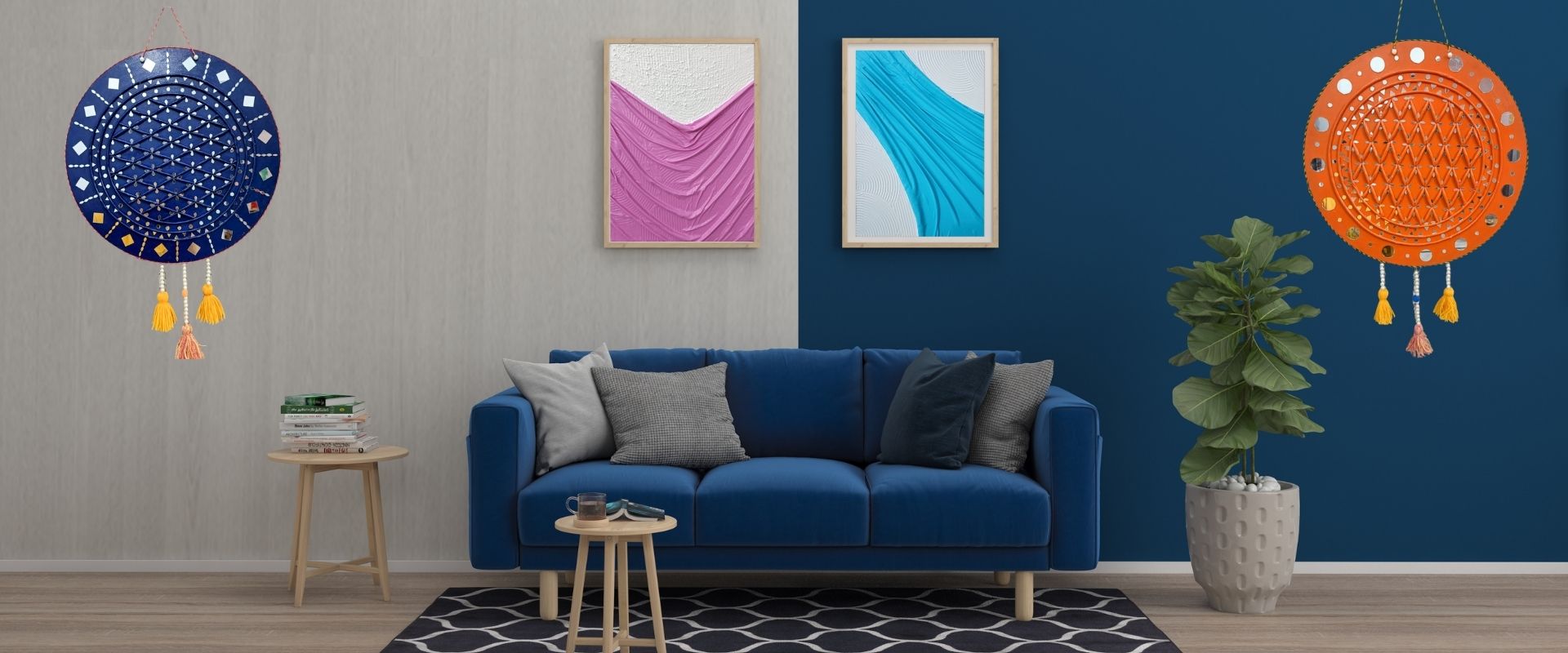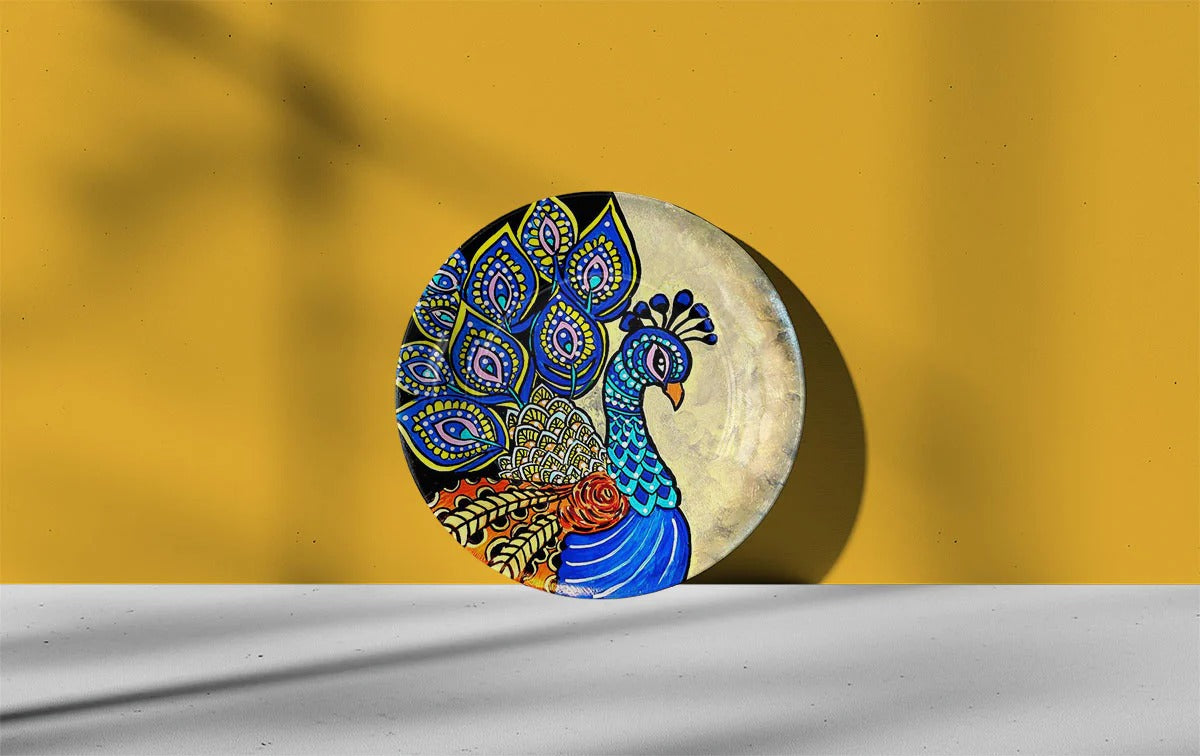
Featured collection
Lippan Art
11 products
SHOP BY CATEGORY
Lippan art for homes and commercial space
Lippan art can be a stunning addition to home décor! It brings in a unique blend of traditional folk aesthetics and modern appeal, with its earthy clay textures and reflective mirror work. Here’s how you can incorporate Lippan art into your home:
Accent Walls
A Lippan art accent wall can make a bold statement. Consider placing it behind your sofa, above your bed, or in any room that could use a pop of texture and color.
Framed Art Pieces
You can even have custom frames designed to complement the Lippan artwork. Go for wooden or metal frames to match the material of your room's furniture.
Door and Window Panels
Using Lippan art on the door frames or window sills adds a touch of elegance and cultural heritage. The beautiful patterns paired with mirrors will make the entryway look inviting and vibrant.
Ceiling Designs
Lippan art can be applied to ceilings, especially in traditional or rustic-styled homes. Designs can be made in circular or floral patterns, and the reflective mirrors will catch the light.
Lippan Art on Furniture
Consider adding smaller Lippan accents to cushions, backs of chairs, or along the armrests. This is a great way to add an ethnic touch without overwhelming the entire room.
Decorative Plates and Bowls
You can have small, decorative Lippan bowls or plates for use as centerpieces or wall décor. They can be used as trays or simply hung as art pieces.

The Artist
Divya Chauhan
Divya Chauhan is a creative professional with expertise in web design, handcrafted product development, and digital entrepreneurship. After completing her post-graduation in 2009, she began Computer Teacher Training but paused her academic pursuits due to personal responsibilities.
Married in 2011, she gradually balanced family life with her creative passions. With strong support from her husband and brother, she formally trained in web design between 2014 and 2018. In 2019, she began planning a boutique and exploring digital platforms.
Despite health issues and the pandemic, Divya continued developing handmade crafts from home. She specializes in customized products using cardboard, paper, and traditional techniques like Lippan and textured art.
Handling everything from design to delivery, she focuses on quality and personalization. Today, Divya operates independently from home, off ering bespoke creations. Her work beautifully blends traditional craftsmanship with modern aesthetics, building a loyal customer base through social media and word of mouth.

Lippan art for wall decoration
Ideal usage : Perfect for Home Decor like living room, bedroom , hall, entrance, stairs, wall, the wall you want decorate
FAQ
What is Lippan art?
What is Lippan art?
Lippan art is a traditional folk art from the Kutch region of Gujarat, India. It involves the application of clay and mirror work on surfaces like walls, ceilings, and furniture to create intricate and colorful geometric patterns. The art is known for its reflective quality, thanks to the embedded mirrors, which enhance its beauty and bring a sense of vibrancy to the surroundings.
What materials are used in Lippan art?
What materials are used in Lippan art?
Clay: The base material used in Lippan art is typically maoulded clay mixed with cow dung or other organic binding agents. The clay is applied to a surface and sculpted into patterns.
Mirrors: Small, flat pieces of glass or mirror are embedded into the clay designs. These mirrors are placed strategically to add a reflective effect and to catch light.
Paints (optional): Sometimes, artists use natural dyes or paints to add color to the designs, although the traditional form often relies on earth tones.
How is Lippan art applied to walls?
How is Lippan art applied to walls?
Surface Preparation: The surface (typically walls or ceilings) is first cleaned and smoothed to ensure the clay adheres well.
Clay Layer: A thin, smooth layer of clay is applied to the wall.
Designing: Once the clay is applied, the artist uses tools like fingers, wooden sticks, or other implements to carve and shape the clay into intricate patterns.
Mirror Placement: Small mirrors are strategically embedded into the clay designs to enhance the beauty of the artwork.
What types of designs are common in Lippan art?
What types of designs are common in Lippan art?
Geometric Patterns: These include triangles, squares, spirals, and circles. These are often arranged symmetrically across the surface.
Nature Motifs: Designs inspired by nature, like flowers, peacocks, sunbursts, and animals, are commonly seen.
Abstract Patterns: Some artists also experiment with abstract and contemporary designs while maintaining the core techniques of Lippan art.
How do mirrors in Lippan art work?
How do mirrors in Lippan art work?
Mirrors play a significant role in Lippan art. They reflect light, which makes the artwork sparkle and adds a dynamic element to the design. The mirrors are usually placed in such a way that they complement the geometric patterns and can create visual effects like light reflections or shine, particularly in low-light environments.
Can Lippan art be used for home décor?
Can Lippan art be used for home décor?
Yes! Lippan art is a beautiful and timeless addition to any home décor. It can be used:
- wall art or murals in living rooms, bedrooms, or entryways.
- furniture like cabinets, coffee tables, and mirrors.
- lighting fixtures, like lamps or pendant lights, where the reflective nature of the mirrors enhances the lighting effects.
- doors and windows, as an accent piece.
It can work beautifully in both traditional and modern interiors, especially when you want to bring in an ethnic touch.

Custome Products
Call us
+91-8171438444
Mail us at
info@vistaracraft.com
vistaracraft01@gmail.com
Subscribe to our newsletter
Promotions, new products and sales. Directly to your inbox.
About us
I began exploring different art forms like Lippan art, Taxlume art, and many others. I practiced consistently, and today I am proud to say that I’m able to work independently from home while being with my family.
Quick links
Powered by TheCoderroot.com





